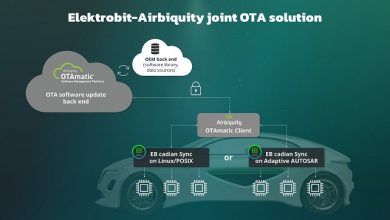SEAT Working on Project that Enables Car Communicate with Traffic Lights
A project sponsored by SEAT, the Spanish Traffic Authority (DGT), the Barcelona City Council and ETRA (Electronic Trafic) connects vehicles with traffic lights and information panels via the DGT 3.0 platform. The DGT 3.0 platform keeps road users connected by informing them of real-time traffic status, diversions, and reversible lanes, application of measures for pollution protocols, traffic restrictions, road works being carried out and any type of incident that may affect traffic circulation.
The project connects vehicles with traffic lights and the traffic control centre so drivers can anticipate their upcoming status. It also enables information on motorway incidents to get sent directly to vehicles without the need for information panels, bringing cars and infrastructure together via the cloud using cellular technology with latency times of 300 milliseconds.
The vehicle used in this pilot project is equipped with the necessary technology to connects with its surroundings and receive information uploaded by the Traffic Authority to the cloud, which in turn enables the driver to anticipate what lies ahead in real time.
One part of the project consists in linking cars with traffic lights. When a vehicle is approaching a traffic light, an alert appears on the screen showing whether it will be red, green or yellow when it arrives, as the system performs a calculation based on how far away the car is and the speed it is travelling at. One important note for safety is that it only works as long as the vehicle is not exceeding the speed limit. On the contrary, the system will no longer alert the driver.
Today there are 2,000 information panels that provide drivers with traffic and weather conditions or information about road work or accidents. With this system, all of this information is displayed directly on the screens of connected vehicles at any point of the road network. The more information leads to the fewer situations of risk. This is the goal of the project, which puts road safety at the centre, together with greater driving efficiency.
“With this project we’re taking a first step to connect cars with overall traffic infrastructure. We’ve begun with information functions, but with the future autonomous vehicle in mind we’ll be able to act directly on the car in situations of risk”, commented Jordi Caus, the Head of Urban Mobility Concepts at SEAT.
SEAT had also joined hands with Telefónica, Mobile World Capital Barcelona, Ficosa, ETRA e i2CAT, etc on a similar project in February this year within the 5G Barcelona initiative. The automaker had contributed with two vehicles, Ateca and Arona models, equipped with the latest technology in connectivity and instrument panels that issue warnings to the driver.
The company has been betting on car connectivity and is backing cutting edge technologies and Connectivity of which is one of the fundamental pillars.
Source: Press Release



